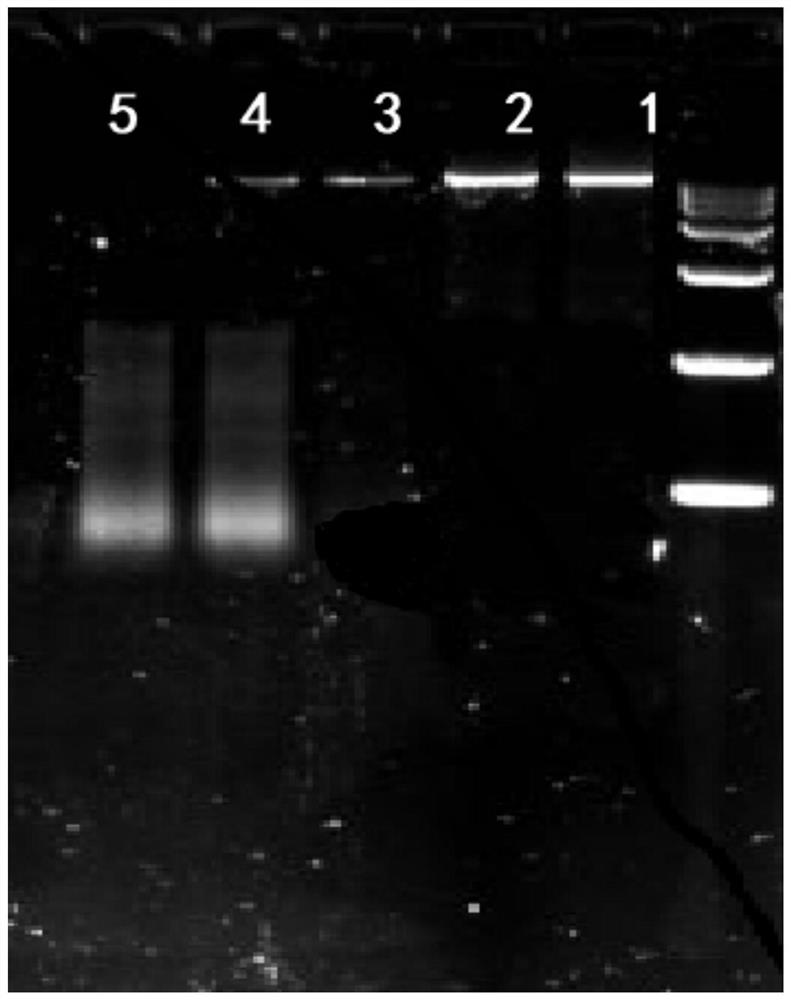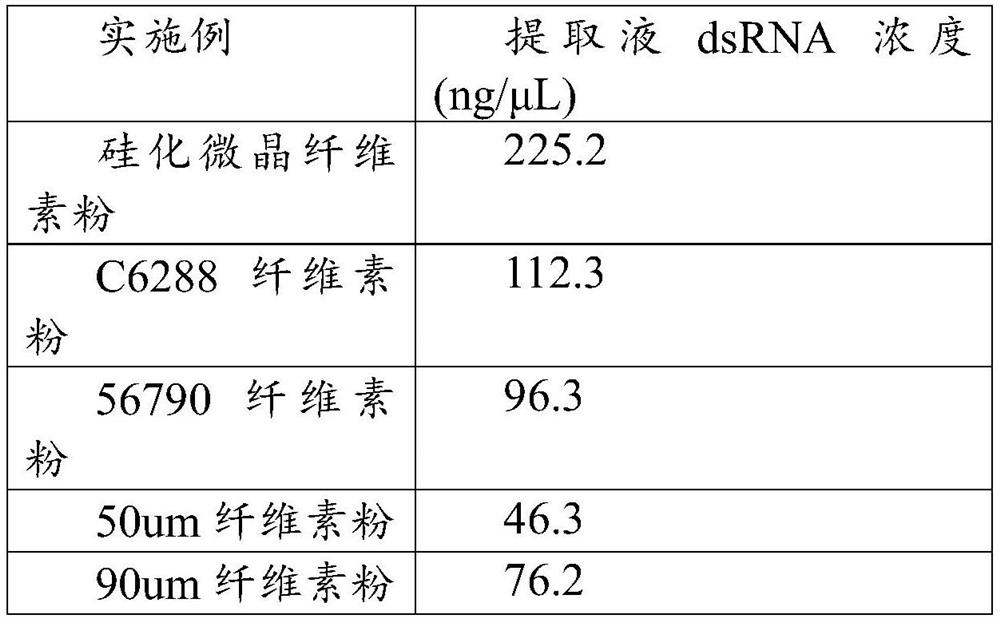DsRNA in organism or tissue and method for extracting dsRNA
An organism and tissue technology, applied in biochemical equipment and methods, recombinant DNA technology, DNA/RNA fragments, etc., can solve the problems of cumbersome operation, expensive reagents, cumbersome operation process, etc., to reduce interference, improve purity and The effect of extraction recovery
- Summary
- Abstract
- Description
- Claims
- Application Information
AI Technical Summary
Problems solved by technology
Method used
Image
Examples
Embodiment Construction
[0026] In order to make the object, technical solution and advantages of the present invention clearer, the present invention will be further described in detail below in conjunction with examples. It should be understood that the specific embodiments described here are only used to explain the present invention, not to limit the present invention.
[0027] An embodiment of the present invention provides a method for extracting dsRNA from organisms or tissues, comprising the following steps:
[0028] S1. Obtain organisms or tissues, crush them, mix them with organic reagents for processing, and centrifuge;
[0029] S2. Take the centrifuged supernatant and mix it with the extraction reagent as the loading liquid to load the chromatographic column, so that the dsRNA in the loading liquid is reversibly adsorbed on the filler in the chromatographic column;
[0030] S3. Use the first solution and the second solution to sequentially elute the filler in the chromatography column in ...
PUM
 Login to View More
Login to View More Abstract
Description
Claims
Application Information
 Login to View More
Login to View More - R&D
- Intellectual Property
- Life Sciences
- Materials
- Tech Scout
- Unparalleled Data Quality
- Higher Quality Content
- 60% Fewer Hallucinations
Browse by: Latest US Patents, China's latest patents, Technical Efficacy Thesaurus, Application Domain, Technology Topic, Popular Technical Reports.
© 2025 PatSnap. All rights reserved.Legal|Privacy policy|Modern Slavery Act Transparency Statement|Sitemap|About US| Contact US: help@patsnap.com


